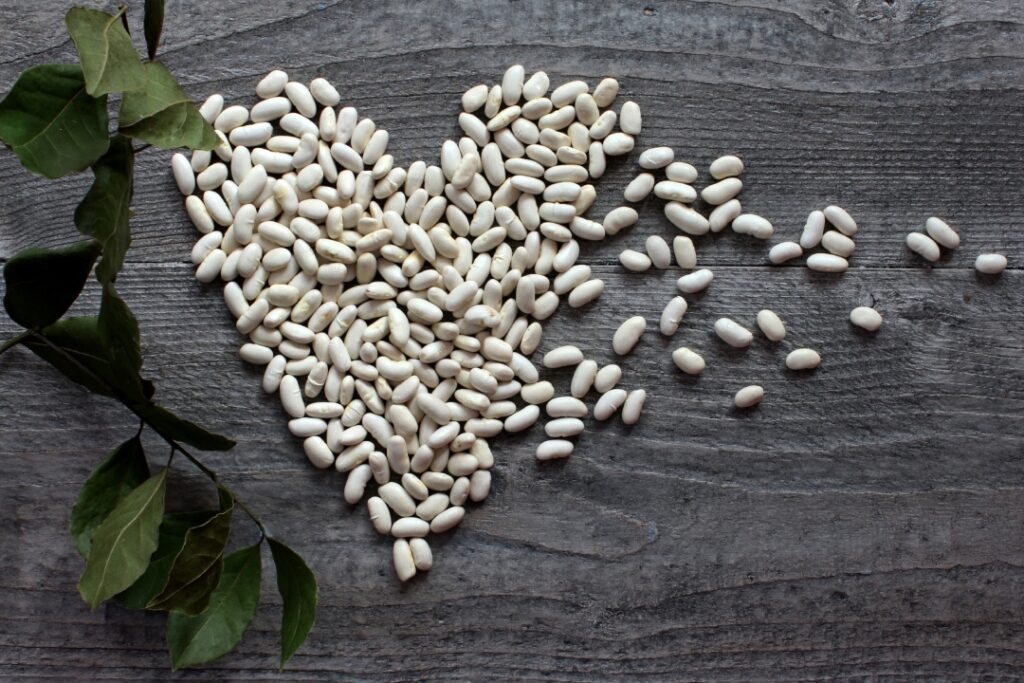
When times got tough, our ancestors ate beans. In fact, beans were so important during the Great Depression that they became the basis for a number of classic dishes you may remember from your grandma’s house when you were a kid.
Interestingly, the history of beans as a survival food goes back much further than the 1930s. Long before Europeans came to North America, indigenous tribes relied on beans—and corn, which we’ll get to later—as an easily produced source of protein.
Today, inflation has propelled the average American’s monthly grocery spending to nearly unsustainable levels, and those nutritious, penny-pinching recipes our grandparents and great-grandparents relied on are starting to sound more and more appealing. We can make no predictions about the future of the economy, but we can absolutely speak to the endless wonders of beans and all the flavorful, healthy dishes you can make with them.
If you’re looking for ways to save some money on groceries without sacrificing taste and nutrition, you could do far worse than to take a page out of great aunt Edna’s book. Beans have always been a key ingredient in survival pantry staples, and here is why you should consider stocking up.
Beans are a wonderful source of nutrition.
There’s one nutrient in particular that most people cite when they’re explaining the benefit of beans: protein!
Depending on the variety of beans, they may contain anywhere from 14.7 grams of protein per cup (in the case of Lima beans) all the way up to 31.3 grams per cup for soybeans. White beans, such as Randall Great Northern Beans, pack a protein punch at 17.4 grams per cup. That’s a lot of inexpensive, delicious protein!
Beans also are a great source of other nutrients, such as potassium. Randall Great Northern Beans are also loaded with folate, vitamin B1 (thiamin), magnesium, and iron. Beans are also low-glycemic, which makes them a great choice for people with high blood sugar.
Did you know that if you eat beans and corn together in the same meal, they provide extra benefits? The proteins in plants are typically considered “incomplete,” meaning they’re not enough to sustain life when consumed separately. This is in contrast to animal proteins, which are complete to begin with.
This problem is easily and cheaply solved, however, by combining beans and corn into one meal. Served together, the proteins in each combine and become complete proteins, which keep your body healthy and help you build and preserve muscle mass even when meat may be scarce.
Native Americans planted the Three Sisters, which were beans, corn, and squash. They were named aptly because the three types of vegetables nurture each other when they are planted together. European settlers adopted this tradition as well, although it particularly took root in the American South, where the climate was more favorable to growing all three crops.
Combining beans and corn is common in many Native American, Southern, and South American dishes. Even corn tortillas serve in a pinch! It’s an added bonus that these two foods just happen to taste great together.
A single cup of cooked beans contains an average of 230 calories, depending on the variety. This makes beans a calorie-dense food in comparison to most other plants you can eat. Since it takes significantly less land space to grow beans than to raise livestock, beans are by far the easier choice for homesteaders and small farmers looking for an economical and manageable way to produce reliable protein.
In addition to low calories, high protein, and beneficial nutrients, beans are a great source of fiber. One cooked cup of beans contains about 60% of your fiber for the day, as well as small amounts of several vitamins and minerals.
They’re a sustainable and tasty source of plant-based protein.
Whether you love or hate the idea, there’s no denying that there has recently been a huge surge of interest in replacing traditional meat with protein alternatives. Some corporations have taken this goal to the extreme, developing burgers, chicken nuggets, and plenty of other options from lab-grown meat that doesn’t require the raising or slaughtering of livestock or any of the processes that go along with animal farming.
Vegetarians and vegans who want to steer clear of animal meat without sacrificing their enjoyment of the occasional cheeseburger have rejoiced at these developments, but the general public’s purchasing habits prove that most people are still wary about lab-grown meats.
The rush to capitalize on meat alternatives has left some folks scratching their heads, however. Beans and other protein-packed vegetables have long been the top contenders for non-meat proteins, and many people don’t see a reason for that to change. Sink your teeth into a skillfully prepared spicy black bean burger with a fresh slice of avocado and a drizzle of mayo, and you just might agree.
Given that 63% of the world’s protein already comes from about 23% of the agricultural land— stemming mostly from beans, legumes, and pulses—it would seem to be beneficial to expend a little extra effort toward optimizing the growth of protein powerhouse plants to feed people for just a fraction of the cost of buying meat or lab-grown meat alternatives.
Agriculturally, beans are nitrogen-fixers. This means that when farmers grow beans, they actually add nitrogen back to the soil that has been depleted by other crops. Using beans in a healthy crop rotation, such as with wheat or kale, can help balance the nutrients in the soil, leading to healthier, more nutritious foods and better crop yields.
In fact, between the years of 2021 and 2022, the yield of beans grown in the U.S. increased by 23% despite the fact that the planting area decreased by 10%. This demonstrates that improving soil health with beans can have dramatic effects in a relatively short period of time.
Beans are easy to prepare.
Have you ever heard of “Washday Beans?” John Coykendall, explains in his book, Preserving Our Roots: My Journey to Save Seeds and Stories (The Southern Table), why washday beans were always served on Mondays in the South.
In the 1800s, before every house had a washing machine, a vacuum, a microwave, or an Instant Pot, women had to do all of the household chores painstakingly by hand.
On laundry day—traditionally Monday, in most Southern homes—women would wash every single piece of clothing and linen in the house, scrubbing them all one by one. This chore took most of the day in a standard household, which didn’t leave much time for preparing an evening meal.
Southern women turned to a Louisiana classic as a way to feed their families lots of healthy protein with minimal prep time. They combined beans, which had been soaked overnight, with onions, celery, peppers, and any leftover bones from dinner the night before. They spooned this concoction over a bed of white rice and added hot peppers or spicy hot sauces for flavor. Thus, Washday Beans were born and Monday became the traditional “red beans and rice day” in many Southern homes.
If the thought of soaking your beans the night before still sounds like too much effort, consider that cooking from dry beans is, by today’s standards, probably the most cumbersome way you could choose to do it. While families in the 19th century didn’t have access to our modern selection of pre-cooked jarred beans, we fortunately do.
If you’re craving a healthy meal that will provide plenty of protein and carbs to fuel up after a hard day’s work, all you need to do is open a jar of Randall Pinto Beans, heat them up, and add some spices. That box of instant rice in your pantry will round out the meal, and the whole thing will have taken you about five minutes to prepare. Until we have futuristic household tech that can conjure a ready-made meal from thin air, that’s about as easy as it gets!
They’re surprisingly versatile!
One reason that inexpensive food staples tend to get a bad rap is that people often think cheap foods are bland or boring. In the case of beans, this is not true!
Sure, you may tire of them if you eat red beans and rice for every meal, but there are so many ways to include budget-friendly healthy beans in a varied diet that, with enough creativity, you’ll never get bored.
For instance, you can make beans for breakfast, lunch, dinner, and even dessert without ever repeating the same flavor combinations. Try a breakfast shakshuka, a refreshing white bean salad, baked mac and cheese with beans, and a white bean coffee cake to savor after dinner.
In fact, if your finances ever get severely strained, you can use your stockpile of beans as a replacement for flour, butter, oil, and several other baking ingredients!
They last (almost) forever.
Check any survival enthusiast’s pantry, and you’ll probably see stacks upon stacks of jarred, dried, or canned beans. That’s because beans are one of those foods that, when packaged well, last much longer than almost any other affordable, high-protein option. Better still, they last that long, even in suboptimal conditions, buried in a basement, without the need for refrigeration or any specialty freeze-drying equipment.
Randall Beans are shelf-stable and remain wholesome if the seal of the jar is not broken. After 12 months, the taste may begin to degrade. Once opened, Randall Beans may be stored for up to seven days in the refrigerator.
In other words: if you’re anticipating that times may get harder in the future and you want to stock up on nutritious foods that won’t go bad, beans are a great choice. Even if hard times don’t come and you don’t have to rely on your emergency stash for nourishment, the chances are good that you’ll still eat your way through your reserves. Non-perishable foods such as beans are almost always a risk-free investment in your family’s health and well-being.
And, yes, beans are also easy on your wallet.
In most of the developed world, meat is very expensive. In times of economic downturn and inflation, meat prices tend to go so high that many people can’t afford or choose not to keep buying it.
Every time a recession hits, fewer people buy meat. Concurrently, the trend toward plant-based proteins and vegetarian eating strengthens. While a nice juicy steak might be a luxury when the economy is healthy, sometimes even a pound of ground beef is too much to ask for during a downturn.
Let’s put this issue into perspective:
If you were to walk into a grocery store in the Midwest, where prices are typically reasonable compared to the rest of the country, you could purchase ground turkey for $3.70 per pound as of the writing of this article. A 1.3-pound package of Angus hamburger patties would cost you $10. And, if you’re trying to go the meat replacement route, you could pick up twelve ounces—only three-quarters of a pound—of Impossible Beef for $9. If you’re in the mood to splurge, a four-pack of choice strip steaks for your family would be $38.05.
Alternatively, you could buy a six-pack case of 48 oz jars of Randall Great Northern Beans for $24.99 plus shipping. One jar goes far: it’s easy to create four recipes from just one 48 oz jar of Randall Beans. This means one case would enable you to feed your family 24 meals with a generous dose of healthy protein in each meal for less than the price of a single steak dinner.
Economically speaking, beans make sense. Combine this with their ease of preparation, long storage time, delicious versatility, and outstanding nutrition profile, and you’ll start to see why beans are at the top of our list of favorite foods ever.

